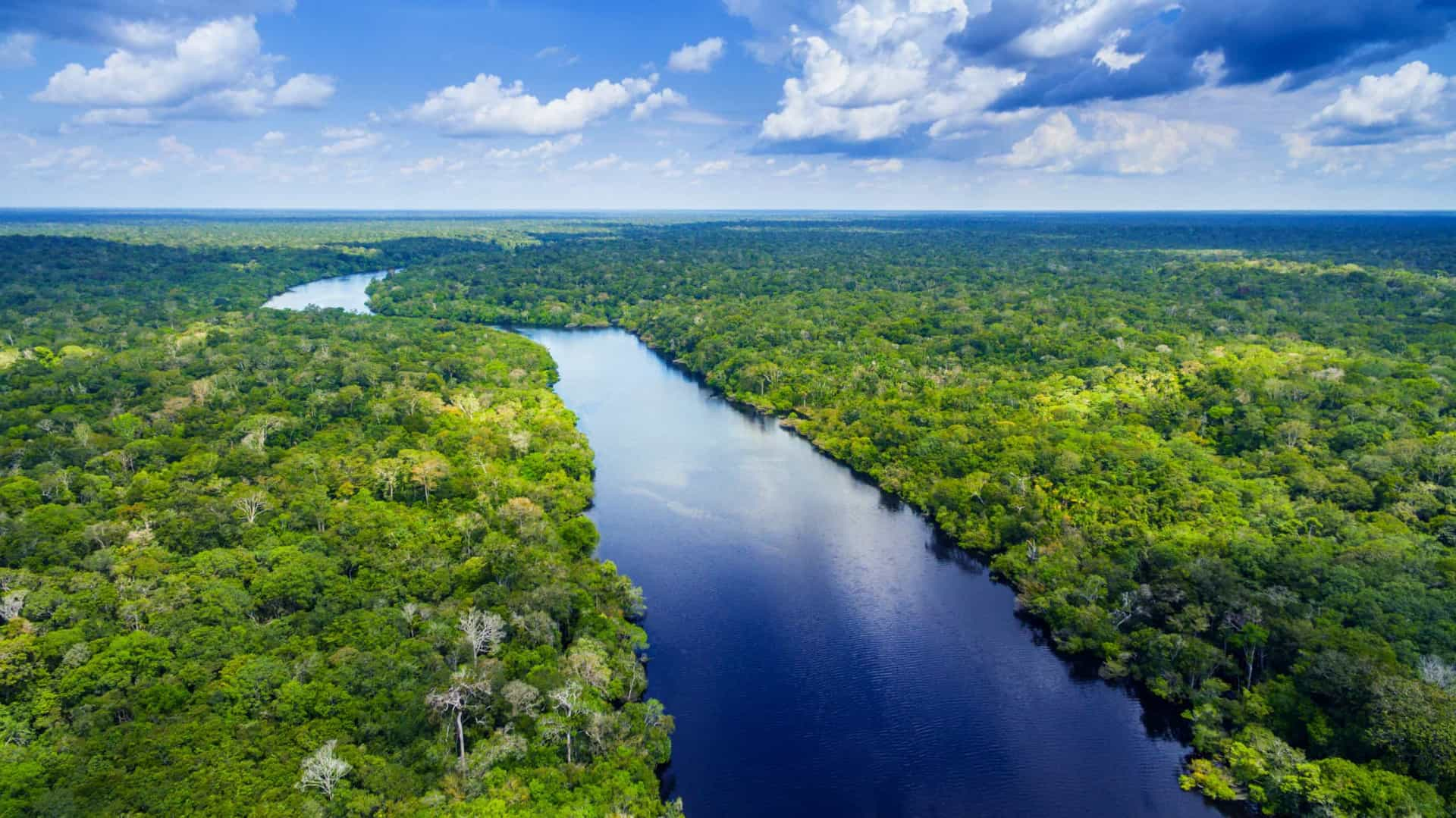The amazon rainforest encompasses an area of 5 500 000 sq kilometres 2 100 000 sq mi which is two times the size of argentina

The Amazon Rainforest: Twice the Size of Argentina

The Amazon rainforest is truly a marvel of nature, covering a vast area of 5,500,000 square kilometers (2,100,000 square miles) - a staggering size that is two times larger than Argentina1^. This expansive region is known for its exceptional biodiversity, breathtaking landscapes, and crucial role in regulating the Earth’s climate.
Nestled predominantly within Brazil, but also stretching to parts of Peru, Colombia, Bolivia, Ecuador, Venezuela, Guyana, Suriname, and French Guiana, the Amazon rainforest is considered the world’s largest tropical rainforest1^. Its unrivaled size and rich ecological significance make it vital for sustaining life not only within its bounds but also far beyond.
Despite facing threats from deforestation, the Amazon rainforest remains home to a remarkable array of plant and animal species. It is estimated that the Amazon houses around 390 billion individual trees, encompassing more than 16,000 species1^. Majestic creatures like jaguars, sloths, and pink dolphins navigate through its diverse ecosystems, while vibrant birds and butterflies fill the air with color and life.
Beyond its rich biodiversity, the Amazon rainforest also plays a significant role in regulating the global climate. Its dense vegetation absorbs an immense amount of carbon dioxide, acting as a vital carbon sink that helps mitigate climate change. Additionally, the rainforest generates about 20% of the world’s oxygen, earning its reputation as the “lungs of the Earth”1^2^.
Moreover, the Amazon Rainforest provides numerous resources and livelihoods for indigenous communities residing within and around its boundaries. These communities rely on the forest for food, shelter, medicines, and cultural practices deeply intertwined with nature. Preservation and sustainable practices are essential to safeguard their way of life while conserving this global treasure.
In recent years, the Amazon rainforest has faced severe threats due to deforestation, primarily driven by human activities such as logging, agriculture, and infrastructure development1^. These activities disrupt the delicate balance of the ecosystem, causing irreversible damage to the environment and endangering countless species.
To mitigate these challenges, international collaboration and sustainable practices are crucial. Conservation efforts, such as protected areas and sustainable land management, are essential for preserving the Amazon rainforest’s ecological integrity and supporting the communities it sustains.
In conclusion, the Amazon rainforest’s sheer size, stretching over 5,500,000 square kilometers (2,100,000 square miles) - equivalent to twice the size of Argentina - is fitting for its remarkable ecological diversity and significance. Protecting this expansive natural wonder is of paramount importance for both current and future generations, fostering sustainable practices that ensure the Amazon rainforest’s well-being and the countless lives it supports.
- Wikipedia - Amazon rainforest↩
- Photo by Rhett A. Butler / Mongabay: https://img-s-msn-com.akamaized.net/tenant/amp/entityid/BB1cExaD.img ↩
Related Posts
Quick Links
Legal Stuff


